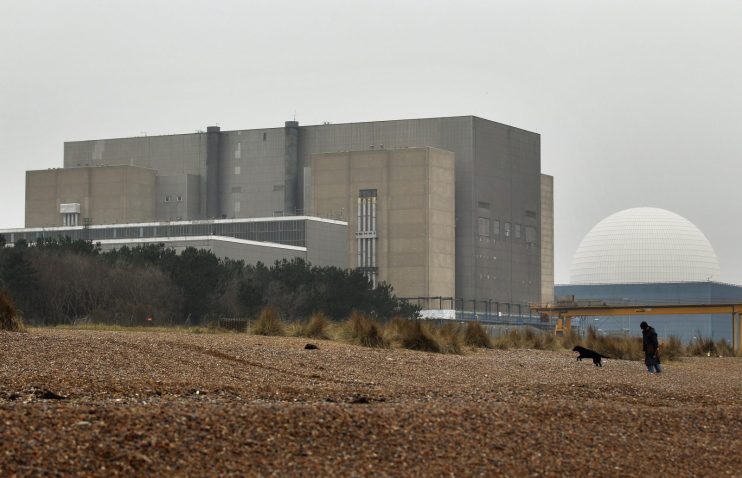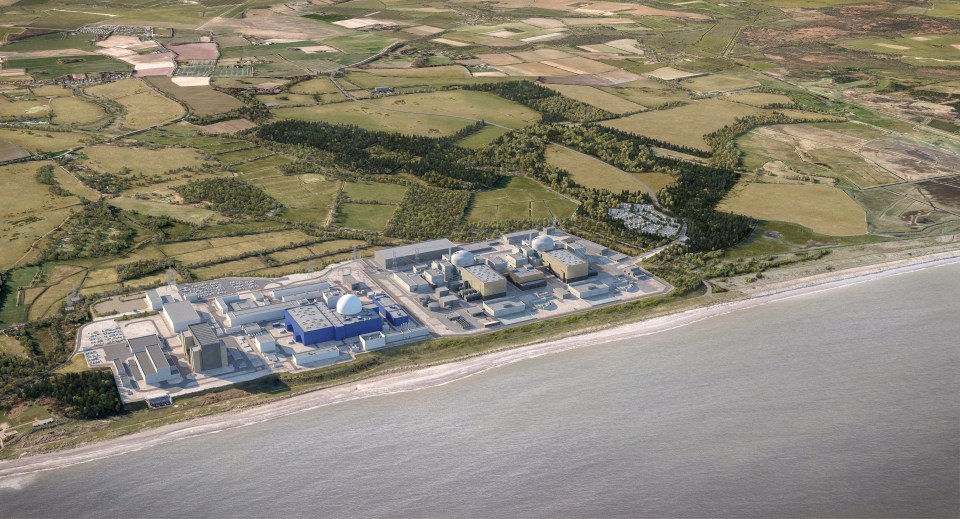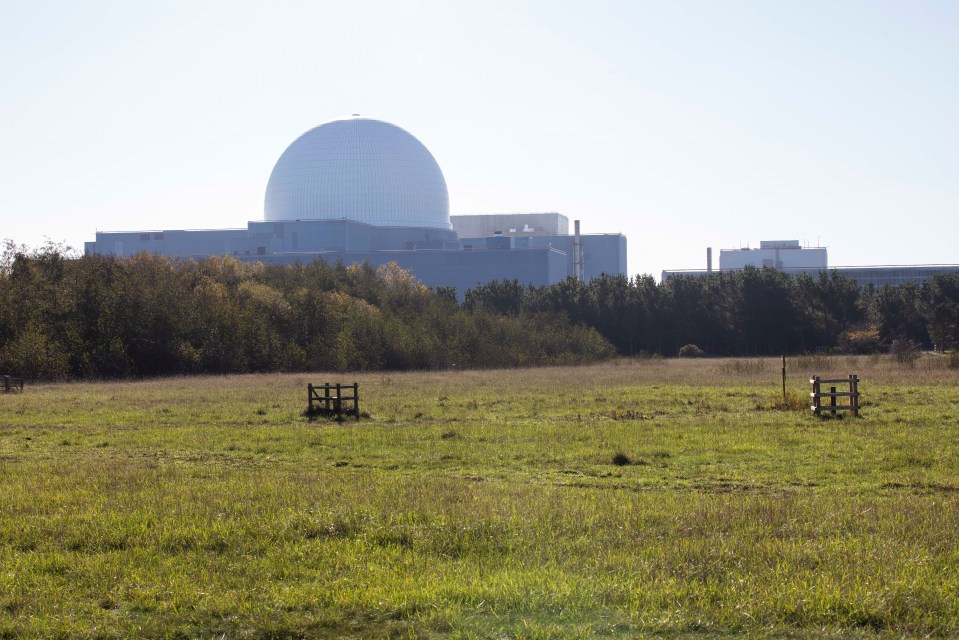Half-life crisis: Can Sizewell C revive the UK’s nuclear ambitions?

The hovercraft, radar, Sutton Hoo treasure…Ed Sheeran – Suffolk has a colourful track record of innovation and discovery.
Prime Minister Boris Johnson is hoping the county can add another fascinating chapter to its eventful history: as the springboard for Britain’s nuclear revival with the Sizewell C power plant.
The Government’s supply security strategy, which was unveiled in April following Russia’s brutal of Ukraine, includes a ‘big new bet’ on nuclear.
Downing Street has targeted an expansion of nuclear power production from 7GW to 24GW and a minimum role of 25 per cent in the UK’s energy generation.
It has also announced Great British Nuclear, a state-backed vehicle which will help push projects through the development pipeline, with eight sites already selected for development as part of Johnson’s push to get eight reactors approved by the end of the decade.
Sizewell is one of these eight potential sites, and is likely the first to be approved under the current Government.
| Power Plant | Closing Date |
| Hinkley Point B | 2022 |
| Hartlepool | 2024 |
| Heysham 1 | 2025 |
| Heysham 2 | 2028 |
| Torness | 2028 |
| Sizewell B | 2035 |
It is a proposed 3.2GW, two-reactor nuclear plant identical in design to Hinkley Point C – the Somerset-based development which is set for completion in 2027.
Both projects are being overseen by French energy giant EDF.
If greenlit and completed – Sizewell will provide reliable, low-carbon power to six million homes and meet around seven per cent of the country’s consumption demand.
Sizewell’s Director of Financing Julia Pyke told City A.M. that Sizewell will be a crucial cog in a greener future, and that nuclear power is not in competition with renewable projects.
It will also provide energy for the grid and for industry, while also helping to power hydrogen projects.
She said: “Some people in the nuclear industry are almost unhelpful in their passion for nuclear, because they present it as an alternative to renewables. It isn’t. It’s part of a system, and that system has to work together.”
On track: Sizewell moves one step closer to construction
Earlier this month, Sizewell was selected as a viable candidate for regular asset base model (RAB) funding – meaning that it could receive taxpayer backing during the initial construction phase to ensure the project gets off the ground (a similar approach has been adopted in the building of the Thames Tideway Tunnel).
This model was outlined in the Government’s Nuclear Financing Bill last year, which has been designed to both ensure projects can finally get off the ground, and to encourage domestic investors over overseas backers.
It is expected that EDF will eventually hold a 20 per cent stake in the project, with the Government holding a 20 per cent special share, and the remaining 60 per cent consisting of pensions and infrastructure funds.
Currently, Chinese state-backed CGN Group own a 20 per cent holding, but they are expected to be eased out when funding is finalised.
Separate to this, planning consent is finally expected next month – following an eight-year process – meaning work on the site could begin as soon as this autumn, with the construction process likely to take 10-12 years.

Pyke moved to EDF five years ago to work on both Hinkley and Sizewell, but has shifted exclusively to Sizewell over the past four years.
Her role has centred on making private financing for nuclear viable.
Most recently, this was through the introduction of the RAB model, but she has also had to engage in equity raising alongside making the ESG case for the project.
Currently, Pyke is undertaking an indicative rating process for Sizewell, to ensure the plant can be given an investment grade for its debt.
The country’s existing, ageing nuclear fleet was chiefly funded through state financing, making the private sector expansion a new challenge for the UK energy sector.
Commenting on the financing process, Pyke said: “People exaggerate to which people are anti-nuclear. They’re not anti-nuclear, they have just never had cause to think about financing nuclear, because there hasn’t been anything to finance.”
Show me the money: Costs and delays hit power projects
Murkiness over money has been the main source of criticism directed towards Sizewell.
The Government has said energy users will collectively save more than £30bn over the Sizewell’s lifetime, and on each new large-scale nuclear power station, compared with existing funding mechanisms.
It has claimed the RAB model will add only a few pounds a year to typical household energy bills during the early stages of construction, and on average approximately £1 per month during the full construction phase of the project.
However, in its draft reasons for designation, it farcically defined the value for consumers across all scenarios as ‘XX’ – leaving official calculations blank.
Pyke conceded she probably wouldn’t have published a table of X’s, but argued the concealment was in the public interest as EDF and the Government push to contain costs.
She said: “I think we’re at a point in the project where we’re negotiating the supply chain and we want to negotiate down the build costs as far as we can. We are expecting the cost of the money to be setting competition, and we want those to be driven down as far as they can.”
| Energy source | Current generation | Target – Date |
| Solar Power | 14GW | 70GW – 2035 |
| Offshore wind | 11GW | 50GW – 2030 |
| Nuclear | 7GW | 24GW – 2050 |
| Hydrogen | 5GW | 10GW – 2030 |
Downing Street previously admitted risks of cost overruns and delays – which has only heightened amid supply chain disruption and inflationary pressure following the Covid-19 pandemic.
Research from the University of Greenwich Business School, first reported in The Observer, warns costs for the project could rise as high as £35bn, well above initial government estimates of £20bn.
This follows Hinkley’s construction costs spiralling from £18bn to £26bn – and being delayed two years from its initial completion date.
While Pyke did not reveal a specific figure for Sizewell – she has calculated one and “did not recognise the upper end” of recent forecasts.
The plans to boost nuclear energy generation have come under fire from high-profile MPs, such as former Financial Secretary to the Treasury Jesse Norman.
He cited Government plans to approve eight reactors in a decade as a reason for handing in a no-confidence letter – saying there was ‘zero chance’ it could happen.
Meanwhile Andy Mayer, energy analyst for the Institute of Economic Affairs, told City A.M. the current nuclear plans were both too expensive and more eye-catching than substantive.
He said: “Ministers are far too close to the energy industry and convey every sense they have forgotten their fundamental duty to manage trade-offs and protect consumers, in a zeal to signal their virtue on tackling climate change with ‘big bets’.”
Mayer also referred to government impact assessment’s, putting the cost of replacing the current fleet at an eye-watering rate of £68-120bn.
Future benefits will drive nuclear ambitions
With six plants set for closure between now and 2035 – and current energy generation flagging at 16 per cent – the odds of boosting generation levels back to 25 per cent seem challenging, even if the Government relies on small, cheaper modular reactors such as those proposed by Rolls-Royce.
After all, Hinkley is the first plant to be built in the UK since 1995.
However, Pyke argued the long-term dividends such as supply security meant that issues over costs over disruption, which she chiefly attributed to Covid-19, would overpower any concerns.
She said: “To me this is a bit like: Was the 1858 sewerage system late and over budget? Yes, it was. Do you wish London didn’t have a sewage system? No, you don’t. Was the London Underground in Victorian era built late and over budget? Yes, it was. Do you wish you didn’t have the Circle Line? No, you don’t. So, there’s a lack of proportionality in the way that people look at the cost of these mega projects.”

Tom Greatrex, chief executive of the Nuclear Industry Association, told City A.M. that nuclear power plants could be constructed collectively in phases to tame rising costs and ensure expertise is passed onto each project.
He said: “That is the opportunity that there is at the moment if we get on with it, of getting towards that 25 percent and 24 gigawatts by 2050. That are inherently what the government said in recent times. It won’t happen if what you do is one at a time and you wait for the first one to generate electricity before you make a decision on the second one.”
This outlook was shared by Pyke, who insisted that EDF are “hugely focused on lessons learned.”
She concluded: “We are really keen what we are doing benefits the whole industry. We are very happy to share everything we’ve done is because our aim is to have a successful sector.”